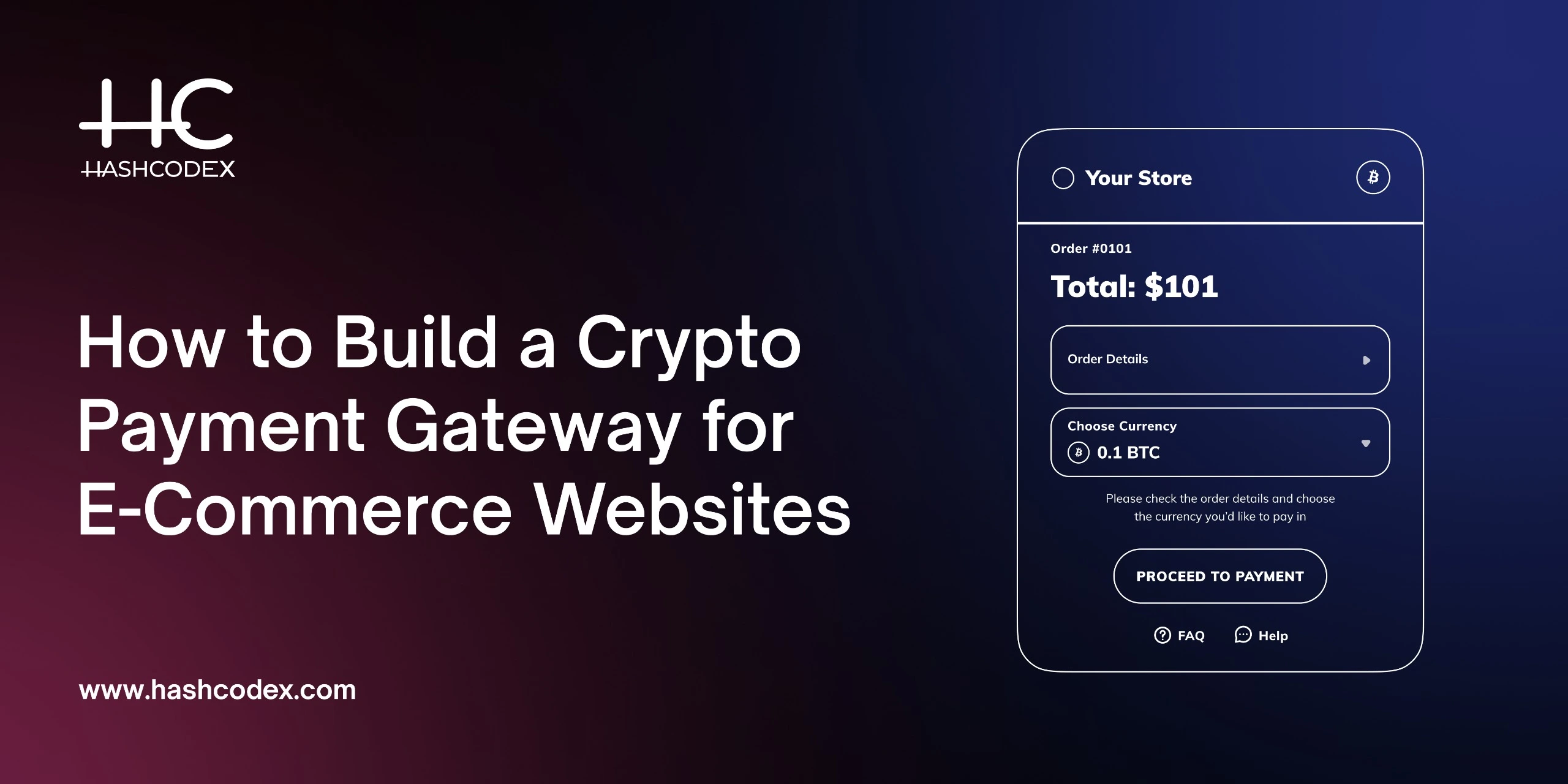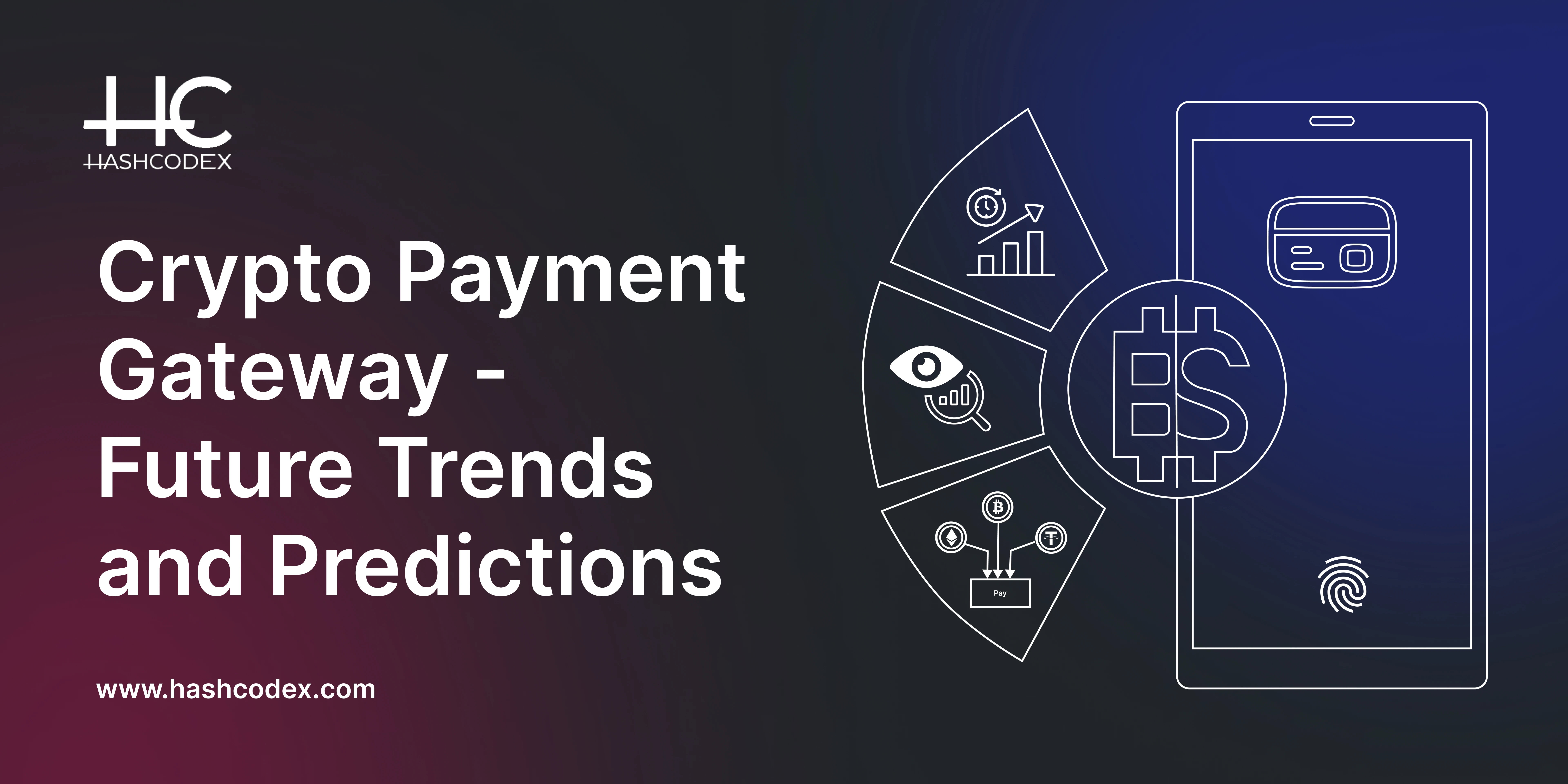
Table of Contents
E-commerce is growing fast! Did you know that over 2.77 billion people use online shopping platforms? That’s nearly 34% of the world’s population shopping online.
Here’s something even more interesting—37% of e-commerce businesses in the U.S. already accept cryptocurrency payments. This shows how digital payments are evolving, and businesses are adapting to new trends.
Now, think about this—whether you're starting a new e-commerce business or upgrading your existing one, the main goal is profit. Adding a crypto payment gateway could open up new revenue streams and future-proof your business.
This blog will guide you on how to create a crypto payment gateway for e-commerce. It might be helpful for your future plans. So, shall we get started?
How to Build a Crypto Payment Gateway for E-Commerce Websites
If you run an online store, accepting crypto payments can make things easier for your customers. It removes the need for banks, speeds up transactions, and opens up your business to a global audience.
But setting up a crypto payment gateway isn’t just about adding a button—it needs to be secure, fast, and easy to use.
Here’s how you can do it step by step.
Step 1: Understand How Crypto Payment Gateways Work
Before setting up a payment gateway, it’s important to know how it works. A crypto payment gateway allows businesses to accept digital currencies like Bitcoin and Ethereum. Here’s a simple way to understand the process:
- A customer selects crypto as a payment method at checkout.
- The system generates a unique wallet address.
- The customer sends the payment, and it gets verified on the blockchain.
- Once confirmed, you receive the funds—either in crypto or converted to a regular currency like USD or EUR.
That’s it. No middlemen, just quick and direct transactions.
Step 2: Study Your Users and Competitors
Understanding your users is just as important as setting up the gateway itself.
What are they looking for in a crypto payment option?
Do they need fast transactions?
Are they worried about security?
Studying customer behavior helps you build a system that meets their expectations.
At the same time, take a look at your competitors. What kind of crypto payment solutions are they offering? Is there something missing that you can improve on? A little research can go a long way in making your payment gateway better than the rest.
Step 3: Pick the Right Blockchain
Not all blockchains work the same way. Some are faster, while others focus more on security. Choosing the right one for your payment gateway helps keep transactions smooth and your system strong.
Popular choices like Solana and Polygon are known for their speed and efficiency. The right blockchain makes a big difference in how well your payment gateway operates.
Step 4: Develop and Design the Payment System
This is where you bring your crypto payment gateway to life. It needs a simple and clean interface so both merchants and customers can use it without confusion.
The backend should handle transactions without delays, and the system should easily connect with e-commerce platforms.
Working with experienced developers can help build a well-structured payment system that easily connects with online stores.
Step 5: Focus on Security
Security is key when handling crypto payments. Since digital transactions can attract hackers and fraudsters, your system needs strong protection to keep everything safe.
Here’s what helps:
- End-to-end encryption to keep data private.
- Two-factor authentication (2FA) to prevent unauthorized access.
- Fraud detection tools to block suspicious transactions.
A well-secured payment gateway builds trust, making users feel safe when paying with crypto.
Step 6: Handle Crypto Price Fluctuations
One challenge with crypto payments is price volatility. The value of Bitcoin and other cryptocurrencies can change within minutes, which can be risky for businesses.
To solve this, your payment gateway should support instant crypto-to-fiat conversion. This means that when a customer pays in crypto, the amount is immediately converted into regular currency, preventing any loss due to price changes.
Step 7: Test and Optimize
Before launching, testing is crucial. Every part of the system must work without problems. Transactions need to be smooth, security features must function properly, and users should be able to make payments without issues.
Even after launching, keep an eye on performance. If something isn’t working right, fix it immediately. A well-maintained payment gateway keeps customers happy and helps your business run smoothly.
That’s it! Setting up a crypto payment gateway takes planning, but when done right, it makes online payments faster, safer, and more convenient.
Comparing Popular Crypto Payment Providers
Thinking about creating a crypto payment gateway for your business?
Before you start, it’s important to check out what other providers are offering. This helps you understand their features, fees, and security so you can do even better. Let’s look at some popular options.
- Binance Pay – A big name in crypto payments. It offers zero transaction fees and supports many cryptocurrencies. But there’s a catch—it’s only for Binance users.
- Coinbase Commerce – A simple and secure choice. It lets businesses accept multiple cryptocurrencies. The downside? Withdrawals are manual, which might not work well for high-volume businesses.
- BitPay – A trusted option with automatic bank settlements, making it easy to convert crypto into cash. But keep in mind, it charges 1-2% + 25¢ per transaction, which can add up.
- NOWPayments – A flexible provider that supports many coins and offers auto-conversion. However, some advanced features come with extra fees.
Why This Matters
As an entrepreneur, studying competitors is key. It helps you find gaps in the market and offer something better. If you want full control over your payment system, building your own gateway is the best option.
Each provider has pros and cons. But if you understand your competitors well, you can create a stronger, more advanced solution that attracts more users.
Must-Have Features for a Crypto Payment Gateway in E-Commerce
If you want to add a crypto payment gateway to the e-commerce, here are the key features you need to make it work well and be safe to use:
1. Supports Multiple Cryptocurrencies
Your crypto payment gateway should accept popular cryptocurrencies like Bitcoin, Ethereum, Litecoin, and others. This way, customers can pay with their favorite digital currencies.
Offering many types of cryptocurrencies will help your business reach more people. It also shows that you are flexible and ready to accept different types of payments.
2. Secure and Reliable Wallet Integration
Make sure your payment gateway connects with trusted crypto wallets, like MetaMask or Trust Wallet. This will help customers and businesses make payments easily and safely.
A good wallet connection means the payments will be smooth and secure. This will make users feel safe and confident when using your gateway.
3. Strong Blockchain Security with Low Fees
Your payment gateway should be built on a safe blockchain. A secure blockchain protects users' money and stops fraud.
It is also important to keep transaction fees low. This way, businesses won’t lose too much money on each payment. A safe and affordable system is the best choice for your gateway.
4. Fast and Responsive Customer Support
Sometimes, your customers or businesses may have questions or problems. You need to offer fast and friendly support so they can get help quickly.
Providing quick support will make sure users are happy and can solve their issues quickly. This builds trust and makes your platform better.
5. Easy-to-Use Interface
Your crypto payment gateway should be simple to use, even for people who don’t know much about crypto. The design should be clear, and it should be easy for users to accept payments and check transaction history.
A simple and easy-to-understand design will help businesses use the gateway without confusion. It makes the process smooth and enjoyable for everyone.
6. Quick and Efficient Transactions
Your payment gateway should process payments fast, with no delays. This helps customers make purchases quickly and easily.
Fast transactions also mean businesses get paid faster, which helps them run smoothly. Quick payments make the shopping experience better for both customers and businesses.
These features will let you create a safe, easy-to-use, and efficient crypto payment gateway that is ideal for e-commerce sites.
Conclusion:
In conclusion, we’ve talked about how to create a crypto payment gateway for e-commerce. But the truth is, that crypto payment gateway development is needed in many types of businesses, not just e-commerce. For example, industries like travel, gaming, and healthcare also need them. So, if you want to build a crypto payment gateway for your business, you need an experienced team.
That's where Hashcodex comes in. We’ve worked with many industries and know how to handle crypto payment gateway development. No matter what type of business you’re in, we’re here to help. With our experience, we believe we can help you create the right solution. Let’s get started!


